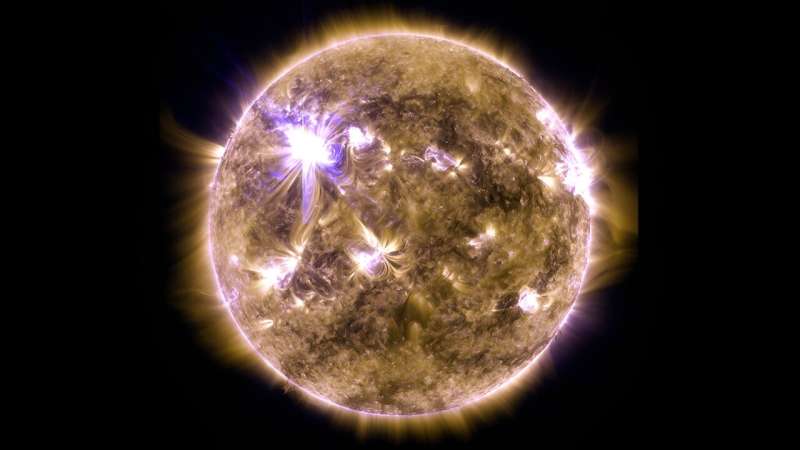This article has been reviewed according to Science X's editorial process and policies. Editors have highlighted the following attributes while ensuring the content's credibility:
fact-checked
peer-reviewed publication
proofread
Aurora records reveal shortened solar cycle during Maunder minimum

Sunspots change in number depending on how much magnetic activity the solar dynamo generates. But there's not total chaos: These changes occur in a cycle, which lasts about 11 years on average. The sun also experiences extended periods of low activity that can last for decades, called grand minima. The Maunder minimum, which occurred between 1645 and 1715, is often viewed as an archetypal example of the sun's behavior during these abnormal periods.
Historical data on the sun's behavior during the Maunder minimum, including records of sunspot activity and radionuclide deposition, are sparse and do not always align. To bolster knowledge of the solar dynamo during the Maunder minimum, Limei Yan and colleagues turned to a new source of data: observations of equatorial aurorae in Korean historical texts.
Korean historians kept meticulous records of events during the Joseon dynasty, which spanned the 14th to 19th centuries. These records include observations of the night sky, such as aurorae, which could be seen regularly during much of the Joseon dynasty because of a geomagnetic anomaly in the west Pacific. Aurorae are correlated with the solar cycle and happen more frequently during periods of high activity.
The researchers used an existing database of Korean historical records to analyze a set of 1,012 aurorae between 1620 and 1810. By noting when aurorae happened more and less frequently, they found a relatively short, 8-year solar cycle during the Maunder minimum. Their paper is published in the journal AGU Advances.
Their work adds to other sources of data on the sun's activity and provides evidence that the solar cycle was temporarily shortened during the Maunder minimum. This change could indicate that the solar dynamo enters a distinct cyclic mode during grand minima, though why that is remains unclear.
More information: Limei Yan et al, The 8‐Year Solar Cycle During the Maunder Minimum, AGU Advances (2023). DOI: 10.1029/2023AV000964
Journal information: AGU Advances
Provided by Eos
This story is republished courtesy of Eos, hosted by the American Geophysical Union. Read the original story here.

















